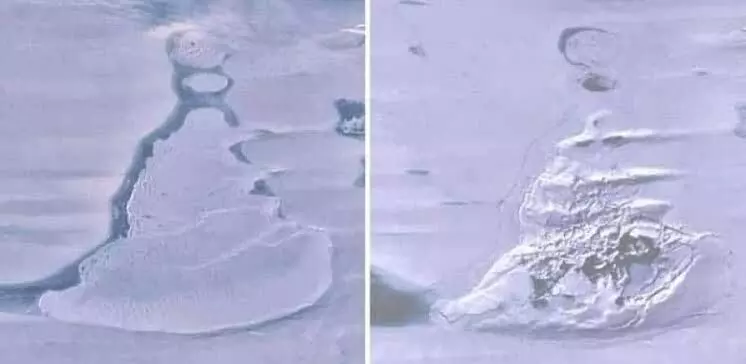
Massive Antarctic lake vanishes in just three days
text_fieldsA huge Antarctic Lake disappeared over the course of just three days in June 2019 after the ice shelf beneath the lake collapsed. The fractured ice shelf sent an estimated 21 to 26 billion cubic feet of water into the ocean.
The event was observed by researchers through satellite technology, after which the findings were published in a journal titled 'Geophysical Research Letters', as reported by news agency IANS.
The large lake is reported to have released around 600 million to 750 million cubic metres of water into the ocean due to a process called hydrofracturing— wherein the ice sheet supporting the lake fractures due to the immense weight and pressure of freezing water.
Roland Warner, lead author of the study and a glaciologist at the University of Tasmania said: "We believe the weight of water accumulated in this deep lake opened a fissure in the ice shelf beneath the lake, a process known as hydrofracture, causing the water to drain away to the ocean below." The fissure caused by the water affects the sturdiness of the ice sheet supporting it.
According to science news portal Live Science, the water which was released into the ocean from the lake resulted in 118 feet rise in the surrounding area.
The increase in the number of meltwater lakes and streams pose a concern as it could lead to more hydrofracturing occurrences, noted researchers. Increased hydrofracturing will cause ice shelves to collapse, which will, in turn, result in the elevation of sea levels further than predicted.
The research team expressed the same worry in their study, stating that: "Antarctic surface melting has been projected to double by 2050, raising concerns about the stability of other ice shelves." They noted that hydrofracture and flexure processes remain understudied and that ice-sheet models do not offer a realistic treatment of said processes.
Live Science also observed that the lake was seen to be filling up again in the summer of 2020. At its peak, around 1 million cubic metres of water was flowing into it in a single day. Warner noted that "It (the lake) might accumulate meltwater again or drain to the ocean more frequently," reported Live Science.























